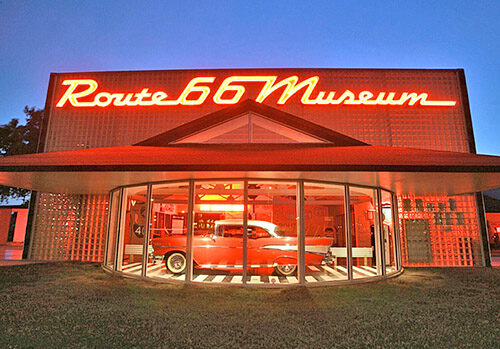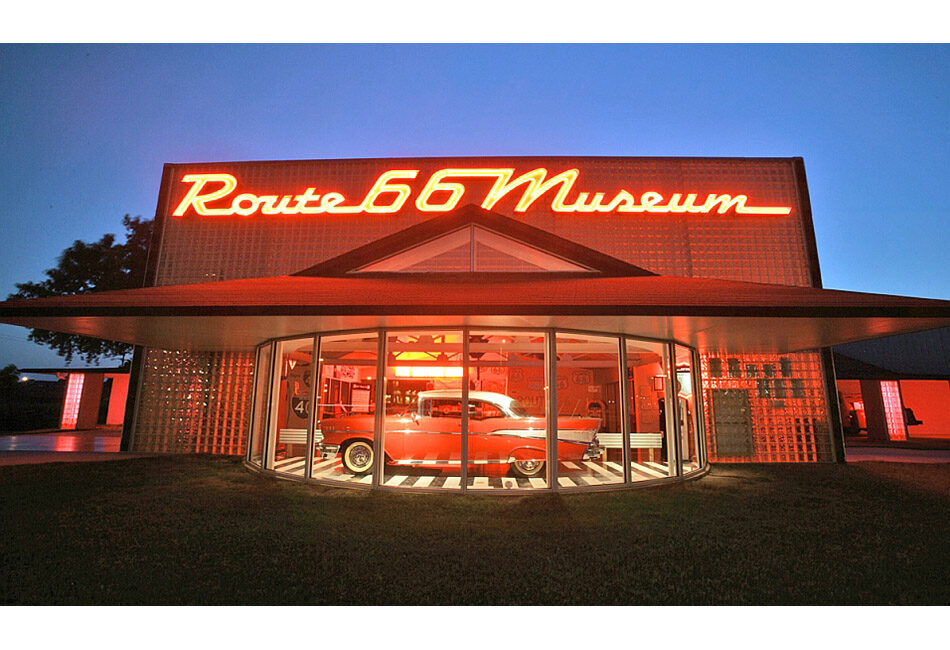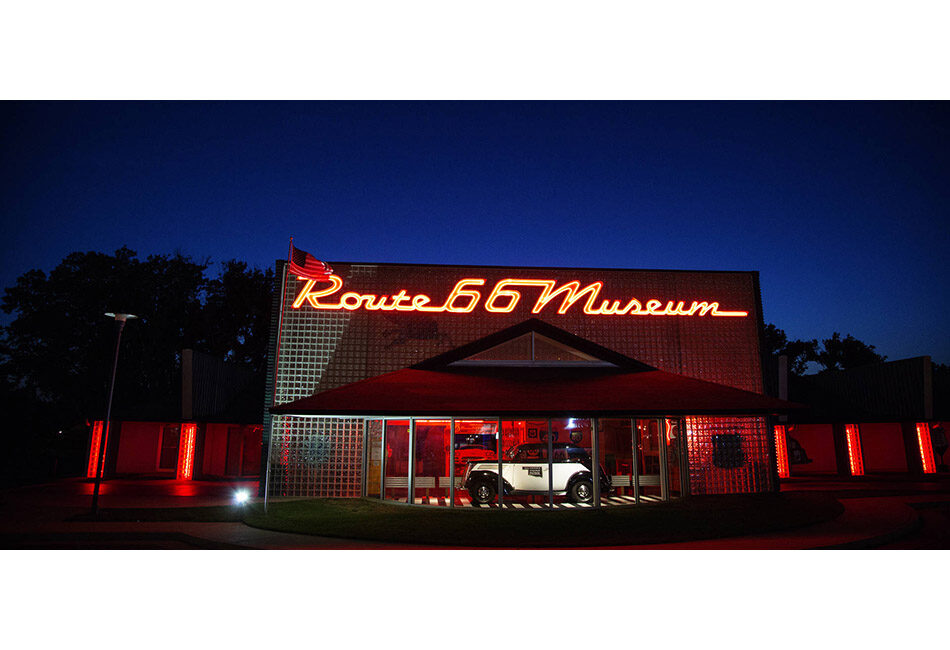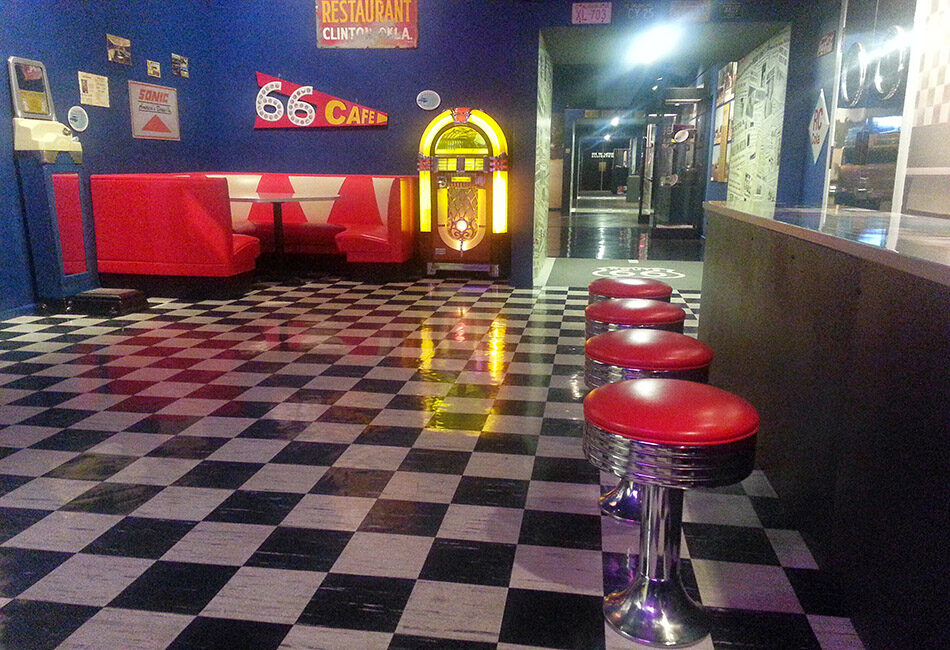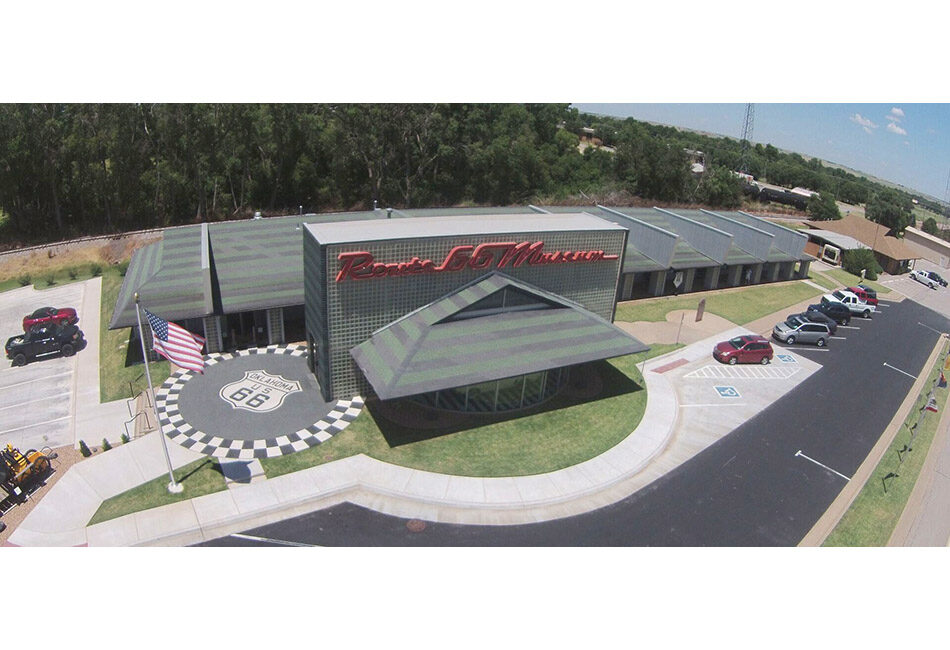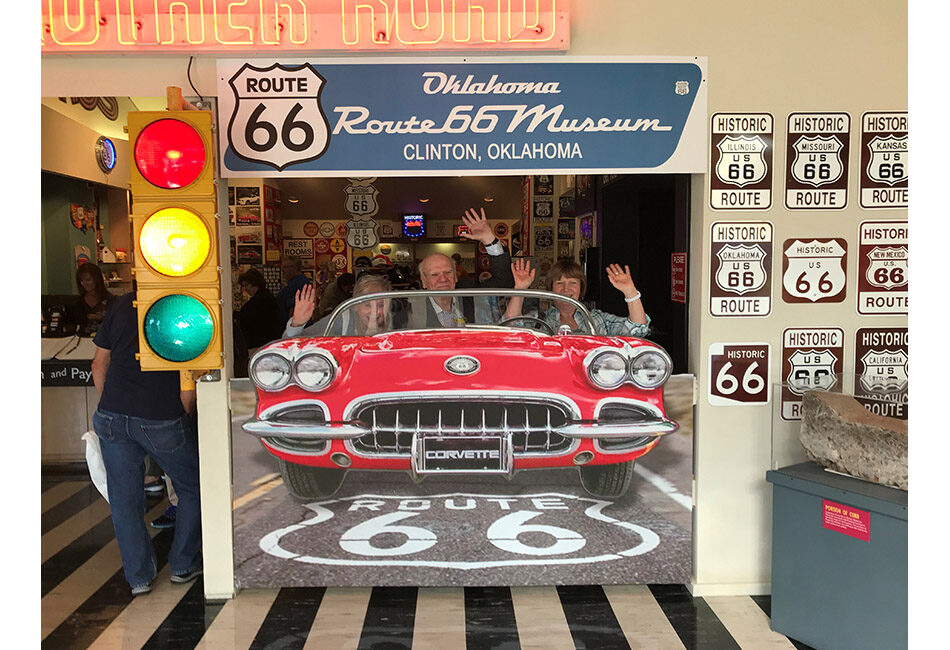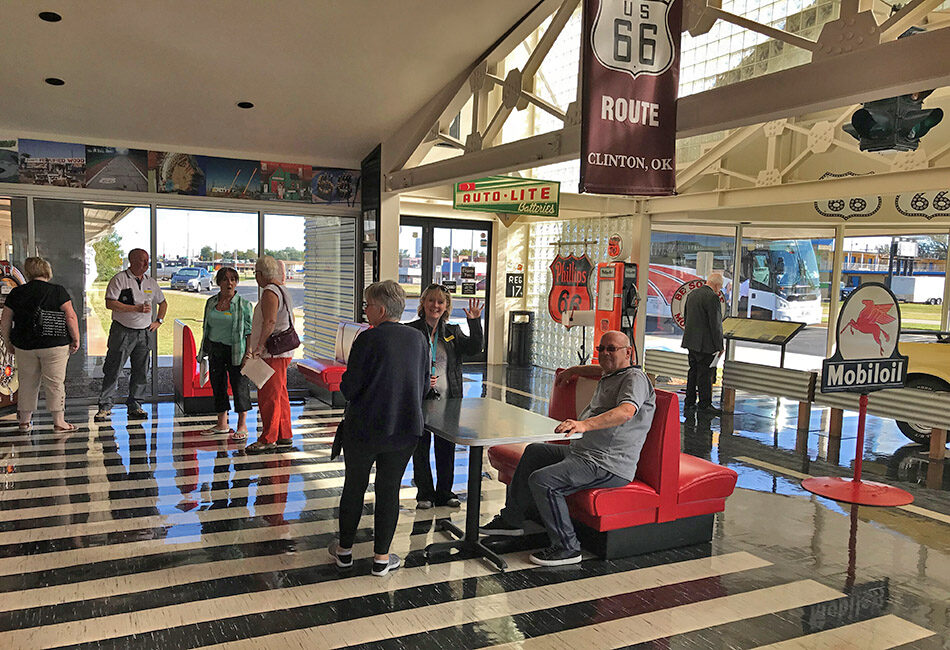How Clinton Oklahoma Overcame Progress with Route 66 Museum
It’s an age-old story that has taken place all over the United States: an old road is replaced by a more modern Interstate freeway. Fascinating history about the old road is lost as traffic and modern times begin flowing down the new road. Just like so many towns along Route 66, this story played out in Clinton, Oklahoma during the 1960s as Interstate 40 was built and traffic was taken off the old Mother Road.
Original story by Mark Potter in the Route 66 Pulse July/Aug 2008
As depicted in the 2006 move Cars, Clinton was just like the fictional town of Radiator Springs. Traffic no longer flowed through town down Route 66. Instead, it sped by on the new interstate highway as commerce in Clinton began to fade.
I-40 Replaces Route 66
Pat Smith, who has been museum director of the Oklahoma Route 66 Museum for many years, is a lifelong resident of the Mother Road and recalls many changes along the route through the years. Those years included the early 1960s when she watched the construction of I-40 take place. Years later, her efforts to revitalize the museum would ultimately lead to it becoming one of the premier attractions along Route 66 and help to bring life back to the Mother Road.
Smith grew up outside Clinton and later she and her family moved into town. She remembers when I-40 was completed and how Route 66 was demoted to being a mere frontage road to the freeway. Everyone wanted to travel on the new “super slab” and nobody thought about driving through Clinton.
Over time, Smith noticed that Clinton and other cities along Route 66 were suffering the same fate. Gas stations, restaurants and motels were experiencing loses and faced competition from new business that began to pop-up next to I-40.
Western Trails Museum
In 1968, the Western Trails Museum was built in Clinton. As the name implies, it told the history of many historic roads and trails in this corner of Oklahoma. But, just like Clinton’s businesses along Route 66, interest in the museum was withering. Smith came to the museum in 1989 and realized it needed a change of direction to attract additional tourist traffic. Smith noted, “There were discussions to convert the museum to a Route 66 theme”.
She added, “The idea of creating a Route 66 museum got off the ground when Gladys Cutberth offered the museum many historic artifacts related to Route 66. Cutberth was the widow of Clinton barber Jack Cutberth, who served as the longtime secretary of the U.S. Highway 66 Association”. This led to the realization that many artifacts in the area were related to Route 66 and the old museum should focus on that theme rather than “western trails”.
The name was changed to the Route 66 Museum in 1993. It featured exhibits from the Cutberth donations along with carryover exhibits from the Western Trails Museum. Route 66 merchandise was also for sale. After operating under the new theme for about a year, the museum closed in 1994 so that it could be transformed into the complete Route 66 theme. During that time, Smith and other local officials led fundraising efforts for the project, which was also funded by various state and federal grant programs.
Pictures
The Oklahoma Route 66 Museum is Born
Rechristened as the Oklahoma Route 66 Museum, it reopened its doors in September of 1995 to a large crowd of visitors in a ceremony that was also attended by local and civic leaders. This included then Governor Frank Keating and Lt. Gov. Mary Fallon.
“It was a very exciting day. We had more than 1,000 visitors come through the museum’s doors all through the day”, Smith said. “It was amazing to see how busy it was that day including every Route 66 enthusiast from around the world coming through.”
More than a decade after the museum reopened, Smith noted that it still is a drawing card for large numbers of tourists year after year. “I’m so thankful that each year our visitation has increased from the previous year”, she said. “We have a lot of repeat visitations, including a couple from New York that’s come through the museum each year since it opened.”
Route 66 Remembered for Generations to Come
Smith says that, since the name change to the Oklahoma Route 66 Museum, more and more international visitors are stopping in, including tourists from England, Italy and Germany. As the people in towns like Clinton have learned, Route 66 is the defining lifestyle of America and people want to see and experience it. Museums and historical sites that were around before construction of the Interstate highways system now live a new life as visitors are immersed into historical American culture from AD 1900 to 1960.
If you’re traveling down the Mother Road west of Oklahoma City, stop in and visit the Oklahoma Route 66 Museum. Each town along the route has a unique story and history to learn about. Thanks to people like Pat Smith who put their heart and soul into preserving history, the American way of life during this period won’t be forgotten. Instead, it will be cherished for generations to come.
